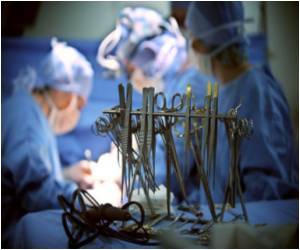Scientists from John Hopkins have developed a gene-based test to differentiate benign and cancerous pancreatic cysts.

Bert Vogelstein, M.D., co-director of the Ludwig Center at Johns Hopkins and a Howard Hughes Medical Institute investigator, and his colleagues analyzed precancerous cysts from 19 patients and searched for mutations in 169 cancer-causing genes. They found mutations in the KRAS gene, well-known for its prevalence in pancreatic cancers, and the GNAS gene, which had not previously been associated with pancreatic cancer. In both KRAS and GNAS, the mutations occur at a single coding spot in the DNA, the equivalent of a typo in a word within an entire encyclopedia. KRAS and GNAS genes produce signaling proteins, relaying signals from the cell surface to areas within the cell.
The researchers then tested a total of 132 precancerous pancreatic cysts for mutations in KRAS and GNAS. GNAS mutations were found in more than half of the samples (87 of them), and KRAS mutations occurred in 107 samples. Nearly all (127) had mutations in GNAS, KRAS or both. The mutations occurred in large and small, high- and low-grade cysts, and in all major types of the most common precancerous pancreatic cysts. There were no major differences in age, gender or smoking history for people with GNAS or KRAS mutations in their cysts'' cells.
Finally, the investigators tested tissue from pancreatic cancers that had developed in eight people with GNAS-mutated cysts. Seven of the eight had GNAS mutations in their cancer, as well as cells in the cysts.
GNAS and KRAS mutations were not found in benign cysts, although KRAS mutations did appear occasionally in a rare type of cyst with a relatively low potential to become cancerous. These rare, mostly benign cysts are less challenging to diagnose because of their location within the pancreas and type of patient, according to the investigators.
"There has long been a need for accurate, quantitative ways to identify cysts that are more worrisome and to help patients avoid unnecessary surgeries for harmless cysts," says Vogelstein, the Clayton Professor of Oncology at the Johns Hopkins Kimmel Cancer Center.
"Most cysts are benign," says pathologist Ralph Hruban, M.D., director of Johns Hopkins'' Sol Goldman Pancreatic Cancer Research Center, "but distinguishing between the harmless and dangerous ones is challenging for doctors and patients alike."
Advertisement
CT scans, MRI imaging, and enzyme and secreted antigen levels in cyst fluid are imprecise markers for precancerous potential, adds Wolfgang.
Advertisement
The investigators caution that cyst fluid removal, an invasive procedure, also has its caveats and can cause bleeding, infection and inflammation in a very small percentage of patients.
Further studies on a larger number of patients must be done before the gene-based test can be widely offered. Vogelstein says, however, that the technology for developing a gene-based test in this case is relatively straightforward because "the mutation occurs at one spot in both of the genes."
Source-Newswise















